How to Avoid getting hurt during Assisted Stretch services
Last week, when I was doing an initial evaluation, the patient was telling me about knee pain that was preventing them from being able to run.
When I started digging into their story, I learned that the knee pain began after going to a stretch studio where their knee was over-rotated during a glute stretch.
While stretch services may be safe for many, I’ve been hearing more and more of these stories lately, so I wanted to share some of my thoughts as a PT.
3 Mistakes to Avoid—Assisted Stretching
Thinking The More It Hurts, The More It’s Helping
Imagine you’re on the table wincing as your foot is being moved over your head to stretch your hamstrings. Did you know the real issue is not that your hamstrings are tight, it’s why?
Your body is an incredible vehicle and when one part breaks down or isn’t doing its job, the brain finds a way around it by compensating with other body parts.
In this case, the restriction you feel in the hamstrings could be because they are working SO hard to compensate for weak glutes.
So if you now stretch the hamstrings when your body is relying on them for stability, it could create even more of an issue. For example, in addition to hamstring tightness you might then develop low back pain as the body tries to find additional stability.
So the lasting solution here would be strengthening your glutes instead of stretching your hamstrings.
Only Doing Static Stretching
I understand that passively working on static flexibility is nice sometimes, but preventing injuries and maximizing how you move is about more than just the ability to touch your toes.
If you have limited time and resources, you’ll get more bang for your buck by moving through a full range of motion with at least your body weight because healthy movement requires balance, strength, endurance and mobility.
For example, if you sit in a deep squat position several times throughout the day (hold a weight for extra points), it will increase strength, balance and hip mobility much more than a passive glute stretch a couple times a week.
Not Identifying Underlying Issues
If you have pain (or had surgery), your first stop should be seeing your Doctor of Physical Therapy to ensure that getting assisted stretching will not make your issue worse.
For example, if your calf feels tight and you see a DPT first, they may tell you that stretching wouldn’t resolve this particular issue because the real problem is that your ankle joint is restricted (common after a sprain) and must be mobilized by a PT to relieve the calf.
Or in a more serious situation, that calf tightness could be the result of a blood clot which has been the case multiple times during an evaluation in the clinic.
Again, it’s critical to understand where your pain or discomfort is coming from before starting assisted stretching.
Starting with the right diagnosis is the only way to know what type of treatment is best for you based on your unique goals, lifestyle, exercise habits, overall health, etc.
I love that people are excited about their health and making time to take care of themselves. As you make choices about how you do that, just keep in mind that getting the full picture of what’s going on with your body will help you get the most out of your efforts


